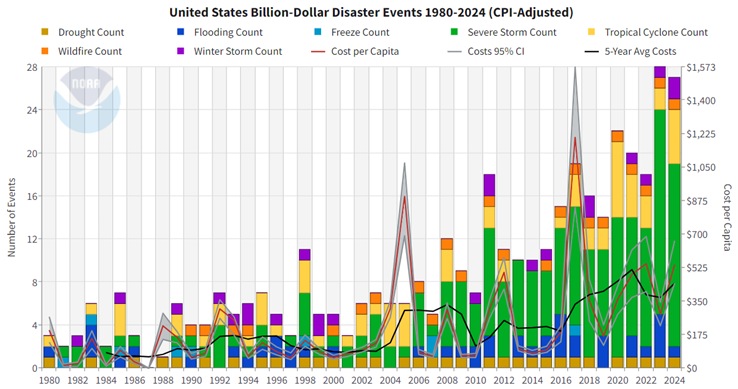Stay connected with a mobile app if disaster knocks out your home phone

Wildfires in Los Angeles and Lahaina, freezing temperatures in Texas, a rare southern derecho, Hurricane Helene raising hell in North Carolina. These are just a few of the recent big weather events that have taken lives, destroyed homes, impacted crops and caused a lot of folks to dust off their emergency preparedness plans.
The National Centers for Environmental Information (NCEI), an office of the National Oceanic and Atmospheric Administration (NOAA), has been tracking weather and climate disasters in the U.S. since 1980, when the United States had three weather and climate disaster events with individual damages that each cost or exceeded $1 billion. For context, there were 28 such disasters in 2023 and 27 in 2024.
During the NCEI’s 44-year period of gathering data, the total number of weather and climate disasters reached 403 and the cumulative cost exceeded $2.9 trillion.* What is particularly startling is that more than half (215) of the 403 disasters occurred in the last five years.

Time series graph created by NOAA and NCEI
Are you prepared?
NCEI’s analysis makes it clear that now is a good time to create or update your family’s disaster preparedness plan. The Federal Emergency Management Agency (FEMA) has many resources, including information for building a disaster supplies kit and a handy template to can fill out online to help you get started.
How will you communicate in a disaster?
An important element of any disaster plan is a list with contact information of everyone you communicate with regularly—family, friends, medical professionals, employers, teachers and neighbors. While you may have all your contacts stored in your cell phone, it’s a good idea to print off a physical list with phone numbers in case your cell phone gets damaged, runs out of charge or gets left behind during an emergency evacuation. Store that list in your family emergency kit.
How will you stay connected?
Another consideration for your emergency preparedness checklist is how you will store and retrieve sign-in credentials for your online accounts so you can transfer funds, purchase goods and contact your insurance agent.
Be sure to add the credentials to access your landline VoIP phone account. For example, Ooma Telo has a VoIP mobile app so you can remotely use your home phone features. This is handy anytime, but especially if your physical phone is destroyed or otherwise unavailable, because the home phone calling app lets you:
- make calls showing your home phone caller ID
- retrieve and listen to voicemail messages
Learn about other ways to use the Ooma app.
Want to get started?
After the one-time purchase of the Ooma Telo, the Ooma Basic phone service is free—all you pay are the applicable monthly taxes and fees, which vary by location and are typically $6 to $9 a month. You can calculate yours here.
If you live in an area with unreliable wired broadband or spotty service, consider Ooma Telo LTE with Battery Backup. This premium option provides 1GB of LTE cellular backup internet to keep your smart devices connected when your primary internet goes down. Plus, with a battery backup, you can count on it to work during power outages.
Taking steps to find the best way to communicate during a disaster can lighten a stressful situation.
*The NCEI used the Consumer Price Index to adjust prior year estimates costs to 2024 dollars.



